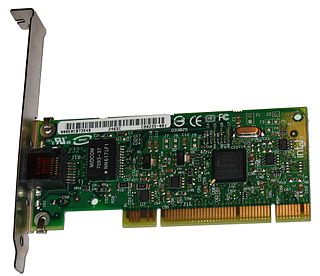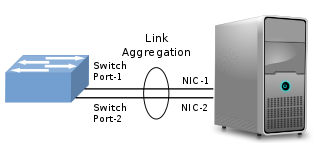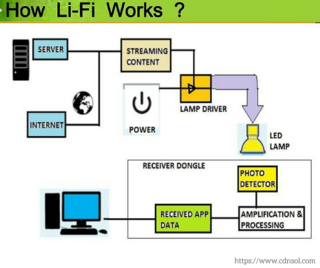| | |
| Founded | December 2009 |
|---|---|
| Type | Standards working group |
| Website | ieee1904 |
The Service Interoperability in Ethernet Passive Optical Networks (SIEPON) working group proposed the IEEE 1904.1 standard for managing telecommunications networks. [1]
| | |
| Founded | December 2009 |
|---|---|
| Type | Standards working group |
| Website | ieee1904 |
The Service Interoperability in Ethernet Passive Optical Networks (SIEPON) working group proposed the IEEE 1904.1 standard for managing telecommunications networks. [1]
Ethernet passive optical network (EPON) is a technology for fiber to the x access networks, with millions subscriber lines. In response to rapid growth, the SIEPON project was formed in 2009 to develop system-level specifications, targeting "plug-and-play" interoperability of the transport, service, and control planes in a multi-vendor environment. [2]
The project was organized to build upon the IEEE 802.3ah [3] (1G-EPON) and IEEE 802.3av [4] (10G-EPON) physical layer and data link layer standards and create a system-level and network-level standard, allowing interoperability of the transport, service, and control planes in a multi-vendor environment. The "P" prefix is used while the standard is being proposed, and then dropped when ratified. A draft standard was announced in September 2011. [5] The Industry Standards and Technology Organization announced a conformity assessment program in February 2012. [6] The first official standard in the series, IEEE Standard 1904.1-2013, was published in September 2013. [7]

In computer networking, Fast Ethernet physical layers carry traffic at the nominal rate of 100 Mbit/s. The prior Ethernet speed was 10 Mbit/s. Of the Fast Ethernet physical layers, 100BASE-TX is by far the most common.

In computer networking, Gigabit Ethernet is the term applied to transmitting Ethernet frames at a rate of a gigabit per second. The most popular variant, 1000BASE-T, is defined by the IEEE 802.3ab standard. It came into use in 1999, and has replaced Fast Ethernet in wired local networks due to its considerable speed improvement over Fast Ethernet, as well as its use of cables and equipment that are widely available, economical, and similar to previous standards. The first standard for faster 10 Gigabit Ethernet was approved in 2002.
IEEE 802.1 is a working group of the IEEE 802 project of the IEEE Standards Association.

A passive optical network (PON) is a fiber-optic telecommunications network that uses only unpowered devices to carry signals, as opposed to electronic equipment. In practice, PONs are typically used for the last mile between Internet service providers (ISP) and their customers. In this use, a PON has a point-to-multipoint topology in which an ISP uses a single device to serve many end-user sites using a system such as 10G-PON or GPON. In this one-to-many topology, a single fiber serving many sites branches into multiple fibers through a passive splitter, and those fibers can each serve multiple sites through further splitters. The light from the ISP is divided through the splitters to reach all the customer sites, and light from the customer sites is combined into the single fiber. Many fiber ISPs prefer this system.

In computer networking, link aggregation is the combining of multiple network connections in parallel by any of several methods. Link aggregation increases total throughput beyond what a single connection could sustain, and provides redundancy where all but one of the physical links may fail without losing connectivity. A link aggregation group (LAG) is the combined collection of physical ports.

A metropolitan-area Ethernet, Ethernet MAN, carrier Ethernet or metro Ethernet network is a metropolitan area network (MAN) that is based on Ethernet standards. It is commonly used to connect subscribers to a larger service network or for internet access. Businesses can also use metropolitan-area Ethernet to connect their own offices to each other.

Ethernet flow control is a mechanism for temporarily stopping the transmission of data on Ethernet family computer networks. The goal of this mechanism is to avoid packet loss in the presence of network congestion.

The physical-layer specifications of the Ethernet family of computer network standards are published by the Institute of Electrical and Electronics Engineers (IEEE), which defines the electrical or optical properties and the transfer speed of the physical connection between a device and the network or between network devices. It is complemented by the MAC layer and the logical link layer. An implementation of a specific physical layer is commonly referred to as PHY.
Ethernet in the first mile (EFM) refers to using one of the Ethernet family of computer network technologies between a telecommunications company and a customer's premises. From the customer's point of view, it is their first mile, although from the access network's point of view it is known as the last mile.
Provider Backbone Bridge Traffic Engineering (PBB-TE) is a computer networking technology specified in IEEE 802.1Qay, an amendment to the IEEE 802.1Q standard. PBB-TE adapts Ethernet to carrier class transport networks. It is based on the layered VLAN tags and MAC-in-MAC encapsulation defined in IEEE 802.1ah, but it differs from PBB in eliminating flooding, dynamically created forwarding tables, and spanning tree protocols. Compared to PBB and its predecessors, PBB-TE behaves more predictably and its behavior can be more easily controlled by the network operator, at the expense of requiring up-front connection configuration at each bridge along a forwarding path. PBB-TE Operations, Administration, and Management (OAM) is usually based on IEEE 802.1ag. It was initially based on Nortel's Provider Backbone Transport (PBT).
40 Gigabit Ethernet (40GbE) and 100 Gigabit Ethernet (100GbE) are groups of computer networking technologies for transmitting Ethernet frames at rates of 40 and 100 gigabits per second (Gbit/s), respectively. These technologies offer significantly higher speeds than 10 Gigabit Ethernet. The technology was first defined by the IEEE 802.3ba-2010 standard and later by the 802.3bg-2011, 802.3bj-2014, 802.3bm-2015, and 802.3cd-2018 standards. The first succeeding Terabit Ethernet specifications were approved in 2017.
Carrier Ethernet is a marketing term for extensions to Ethernet for communications service providers that utilize Ethernet technology in their networks.
The 10 Gbit/s Ethernet Passive Optical Network standard, better known as 10G-EPON allows computer network connections over telecommunication provider infrastructure. The standard supports two configurations: symmetric, operating at 10 Gbit/s data rate in both directions, and asymmetric, operating at 10 Gbit/s in the downstream direction and 1 Gbit/s in the upstream direction. It was ratified as IEEE 802.3av standard in 2009. EPON is a type of passive optical network, which is a point-to-multipoint network using passive fiber-optic splitters rather than powered devices for fan-out from hub to customers.

The Ethernet Alliance was incorporated in the US state of California in August 2005 and officially launched in January 2006 as a non-profit industry consortium to promote and support Ethernet. The objectives were to provide an unbiased, industry-based source of educational information; to ensure interoperability among disparate, standards-based components and systems; to support the development of standards that support Ethernet technology; and to bring together the Ethernet industry to collaborate on the future of the technology.
Terabit Ethernet (TbE) is Ethernet with speeds above 100 Gigabit Ethernet. The 400 Gigabit Ethernet and 200 Gigabit Ethernet standard developed by the IEEE P802.3bs Task Force using broadly similar technology to 100 Gigabit Ethernet was approved on December 6, 2017. On February 16, 2024 the 800 Gigabit Ethernet standard developed by the IEEE P802.3df Task Force was approved.
EPON Protocol over Coax, or EPoC, refers to the transparent extension of an Ethernet passive optical network (EPON) over a cable operator's hybrid fiber-coax (HFC) network. From the service provider's perspective the use of the coax portion of the network is transparent to EPON protocol operation in the optical line terminal (OLT) thereby creating a unified scheduling, management, and quality of service (QoS) environment that includes both the optical and coax portions of the network. The IEEE 802.3 Ethernet Working Group initiated a standards process with the creation of an EPoC Study Group in November 2011. EPoC adds to the family of IEEE 802.3 Ethernet in the First Mile (EFM) standards.
Time-Sensitive Networking (TSN) is a set of standards under development by the Time-Sensitive Networking task group of the IEEE 802.1 working group. The TSN task group was formed in November 2012 by renaming the existing Audio Video Bridging Task Group and continuing its work. The name changed as a result of the extension of the working area of the standardization group. The standards define mechanisms for the time-sensitive transmission of data over deterministic Ethernet networks.
25 Gigabit Ethernet and 50 Gigabit Ethernet are standards for Ethernet connectivity in a datacenter environment, developed by IEEE 802.3 task forces 802.3by and 802.3cd and are available from multiple vendors.

Audio Video Bridging (AVB) is a common name for a set of technical standards that provide improved synchronization, low latency, and reliability for switched Ethernet networks. AVB embodies the following technologies and standards:

IEEE802.11bb is a line-of-sight light-based wireless networking standard that is part of the 802.11 suite of standards, which defines an interoperable communications protocol for Li-Fi devices. Its proponents state that it will allow for very high speed communication that is faster than Wi-Fi.
{{cite book}}: |work= ignored (help)